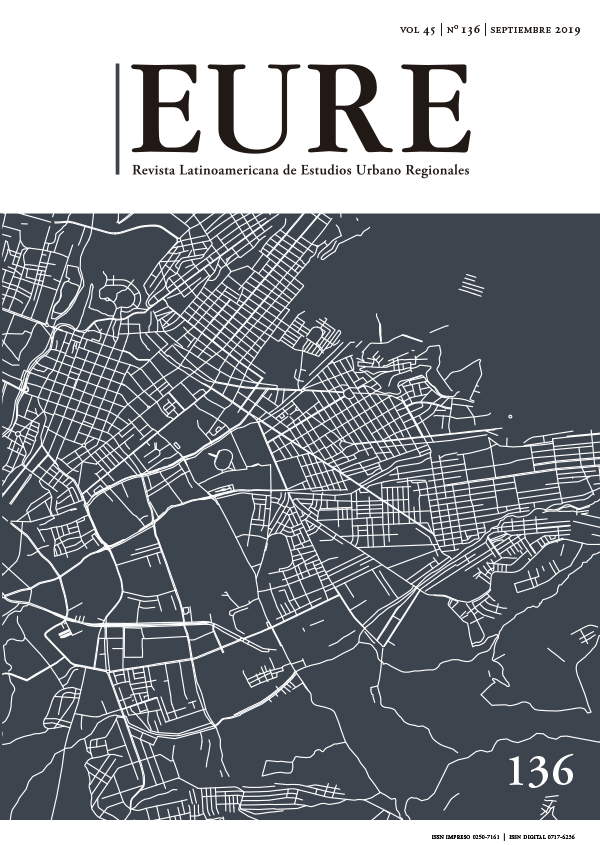Urban Sprawl and Social Exclusion. Analysis of Job Accessibility of the Residents of the City of Rio de Janeiro
DOI:
https://doi.org/10.4067/S0250-71612019000300051Keywords:
urban sprawl, labor market, urban transportationAbstract
Urban sprawl has changed the pattern of population displacement. People
now inhabit less urbanized regions, spending more time in public transports to have access to the cityÍ€™s facilities. In this context, this research focuses on measuring the job accessibility of different areas of Rio de Janeiro city to understand what would be the influence of peopleÍ€™s location and public transports availability. We used a cumulative opportunity indicator to measure the accessibility of the 33 Administrative Regions of Rio de Janeiro. The results show an unequal distribution of accessibility, in which the farthest regions from the urban center have less accessibility, due the high concentration of jobs in the city center and the greater distances between the city center and peripheral areas. Thus, investments in public transportation must be done as a parallel measure to the decentralization and improvement of job distribution throughout the city to improve accessibility.
Downloads
Published
How to Cite
Issue
Section
License
Copyright (c) 2019 Revista EURE - Revista de Estudios Urbano Regionales

This work is licensed under a Creative Commons Attribution 4.0 International License.
Al momento de aceptar la publicación de sus artículos, los autores deberán formalizar la cesión de derechos de autor a EURE, según las condiciones establecidas por la Revista.
Ésta establece que el autor autoriza a EURE de manera gratuita, exclusiva e ilimitada a reproducir, editar, publicar, distribuir, publicitar, comercializar y traducir el artículo, a cualquier soporte conocido o por conocer y desarrollar.
Del mismo modo, los autores aseguran que el artículo propuesto es original, no publicado y no propuesto para tal fin a otro medio de difusión.


